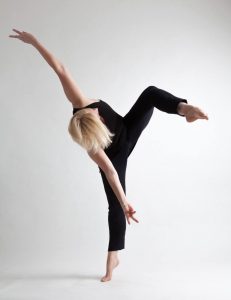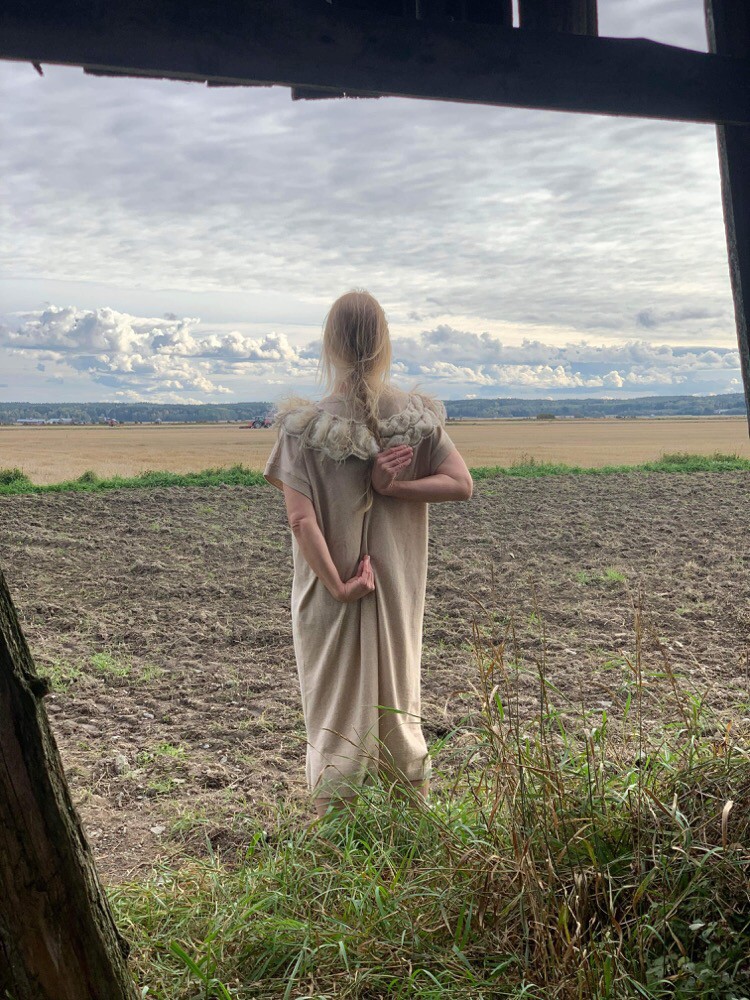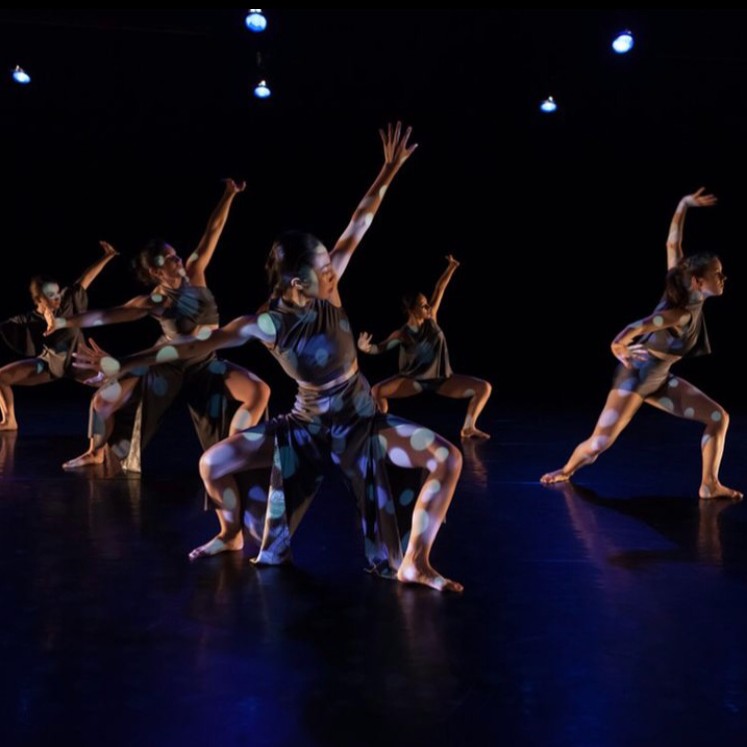
Today we’d like to introduce you to Jessica Kondrath.
Alright, so thank you so much for sharing your story and insight with our readers. To kick things off, can you tell us a bit about how you got started?
I grew up dancing in Chicago and continued my training as a BFA dance major at UC Santa Barbara. After graduation, I moved to New York City I started a small dance company as well as receiving a Pilates certification from the Kane School of Core Integration under the direction of Kelly Kane. I also worked in arts administration and technical production, specifically at the inception of the Baryshnikov Arts Center as the senior house manager, office assistant, and stage technician. In 2009, I returned to southern California and completed my MFA in Dance at CSU Long Beach, where I continued to work as a stage technician and lighting designer for dance. I restarted my dance company upon graduation, which between the years of 2010-2018 performed throughout Los Angeles and the California coast as well as nationally. Highlights for the company have been being presented as artists in residence twice at El Camino College, at numerous dance festivals throughout Los Angeles and Santa Barbara and nationwide in Chicago and Detroit, presenting four evening-length performances at ARC Pasadena as well as being part of the yearly ARTnight Pasadena, traveled twice to New York to perform in the curated Out of Towners festival, and was named a Professional Artist Fellow from the Arts Council of Long Beach.
In 2018, the company rebranded from JESSICA KONDRATH | the movement to GRAYSCALE, with the intention to create work that is interdisciplinary with a diverse group of artists from various mediums. Specifically collaborating with filmmakers, textile and visual artists, costume designers, and percussionists and composers. Since then, the company has created a site-specific work with live accompaniment titled Give Yourself Credit for Having More Than Personality for the Dance Series at the Brand Library and Arts Center in Glendale, the evening-length multi-disciplinary piece Invisible Landscapes that premiered while as an artist in residence at The Visionary in Mount Vision, NY, created an improvisational score for dancers and sign spinners for visual artist Yumi Janario Roth’s gallery show Spin (After Sol LeWitt) at Grand Central Art Center in Santa Ana titled Floor Drawings, and been part of an ongoing collaboration with visual artist Diana Baumbach with the most recent project being a dance film titled Hemlighet created with artists from the Ostrobothnia region in Finland.
Since 2012, I have also been working as a private Pilates Instructor across Long Beach and Los Angeles, as a lighting designer for dance for numerous dance department performances and at ARC Pasadena for local dance companies and have recently become a mentor as part of the Gabriella Foundation’s Everybody Dance! Program. For the past eight years I have taught as an adjunct and guest instructor and choreographer in community colleges and universities throughout Southern California and nationally. As of late 2022, I began splitting my time between Los Angeles and Chicago making work and continuing to teach.
Can you talk to us a bit about the challenges and lessons you’ve learned along the way. Looking back would you say it’s been easy or smooth in retrospect?
Challenges present themselves in different ways. Sometimes they come in the form of an injury, funding the next project, and as an adjunct instructor for the college and university systems, it’s the uncertainty of employment each semester because adjuncts are hired on a semester-to-semester basis. Most often for freelance artists (for myself as a choreographer, teacher, Pilates instructor, and lighting designer), the challenges come in the form of securing ongoing gig work and funding for artistic projects. There is little funding for projects and the college and university dance departments have been challenged in new ways during and post-pandemic. The road of an artist is rarely smooth and straightforward but always takes us in directions unknown and interesting. I think that these challenges can send us into surprising environments that bring new and interesting opportunities which can be transformative learning experiences as well. For example, while working at the Baryshnikov Arts Center in New York, I learned how to compile National Endowment for the Arts grants and touring visa paperwork for visiting artists which is a skill I never expected to have.
Alright, so let’s switch gears a bit and talk business. What should we know about your work?
As a dance educator, I primarily teach modern ballet, choreography, dance history, and Pilates. In the dance and Pilates worlds, there is a long history of exclusion. Because of this, I find it particularly important to dismantle systemic racism, body shaming, and activity work to interrogate the history as it is taught in textbooks to be more inclusive, historically accurate and representative. I am committed to equity in my classroom and devise lesson plans and assignments that are diverse in various learning methods, inclusive to those who lack access to technology and question the systemic isms which exist within the field. In all courses I teach, I work to interrogate the field of dance through the instruction modules and in class discussions to continually move towards dismantling systemic racism and erasure tactics present in the field. My goal in creating an equitable classroom is that students from all backgrounds will find a home in dance, inspire their curiosity, make space for questioning the field at large, and feel that their body is a dancing body and that they are part of the field of dance as a whole. As a Pilates instructor, I work primarily with individuals who are recovering from injuries, moving with various disabilities and movement challenges, and are curious about feeling better/stronger/more powerful in their bodies. Working in this somatic practice, I create space for all bodies and movement needs in the studio. It is important inside my practice that Pilates is for everybody and it is with this intentionality that I connect with my students and clients.
Networking and finding a mentor can have such a positive impact on one’s life and career. Any advice?
Ask questions, ask for help, and connect with people you meet at concerts, classes, and events you attend. The worst thing someone can say is no. But they might be able to help by connecting you with others that might be able to say yes, might be able to point you in a new direction or help you find a network of individuals that can assist in the thing you are curious about making happen. Also, to surround yourself with people that believe in you and believe in your possibilities because the art and freelance world is hard work, and having people around you who can remind you why you are fighting for your work and why it is worth fighting for, and that you can keep going forward because the work is important. The networks that have been the most vibrant for me are the artists that I have taught alongside and frequently collaborate with. In the arts so much of the networking happens at performances and exhibitions where you can chat with friends about their projects and what they are up to, and you meet new people who are doing things you are inspired by and may be interested in being part of. Showing up and supporting is how we keep the arts alive and supported, how we see what’s happening that’s new and interesting; it’s a way to be inspired by our peers and a place to connect to others in our field.
Contact Info:
- Website: http://grayscaledance.org/
- Instagram: @grayscaledance
- Other: https://vimeo.com/user3779676








Image Credits
In total darkness, or in a very large room, very quietly, dancer Kristin Deiss Craig, costume by S-Curve Apparel, photo by Matthew Gregory Hollis.PNG Hemlighet, dancer Carina Ahlskog, created with Diana Baumbach and Jukka Rajala – photo by Jessica Kondrath.PNG The Night, performed by The CSU Fullerton Dance Department A’Kaila Willis, Holly Goodchap, Edward Salas – photo by Denise Leitner.PNG Jessica Kondrath teaching modern at the 2019 Baja Region ACDA Festival – photo courtesy of the festival.PNG Many Moons, dancers Paige Amicon, Haihua Chiang, Briana Masson, Marissa Sands, and Haley Weishaup, created with Diana Baumbach – photo by Denise Leitner.PNG Give Yourself Credit for Having More Than Personality, dancers Noelle White, Megan Seagren, Heidi Buehler, Sinnamon Carbone Hauser – Dance Series at the Brand Library & Art Center – Photo by Denise Leitner.PNG Invisible Landscapes 1 (film still), dancer Liz Hoefner Adamis, costume by Marea Cordero – photo by Taso Papadakis.PNG Floor Drawings as part of Spin (After Sol LeWitt), dancers Morgan Anderson Raynor and Jen Hong – photo by Taso Papadakis.JPG











